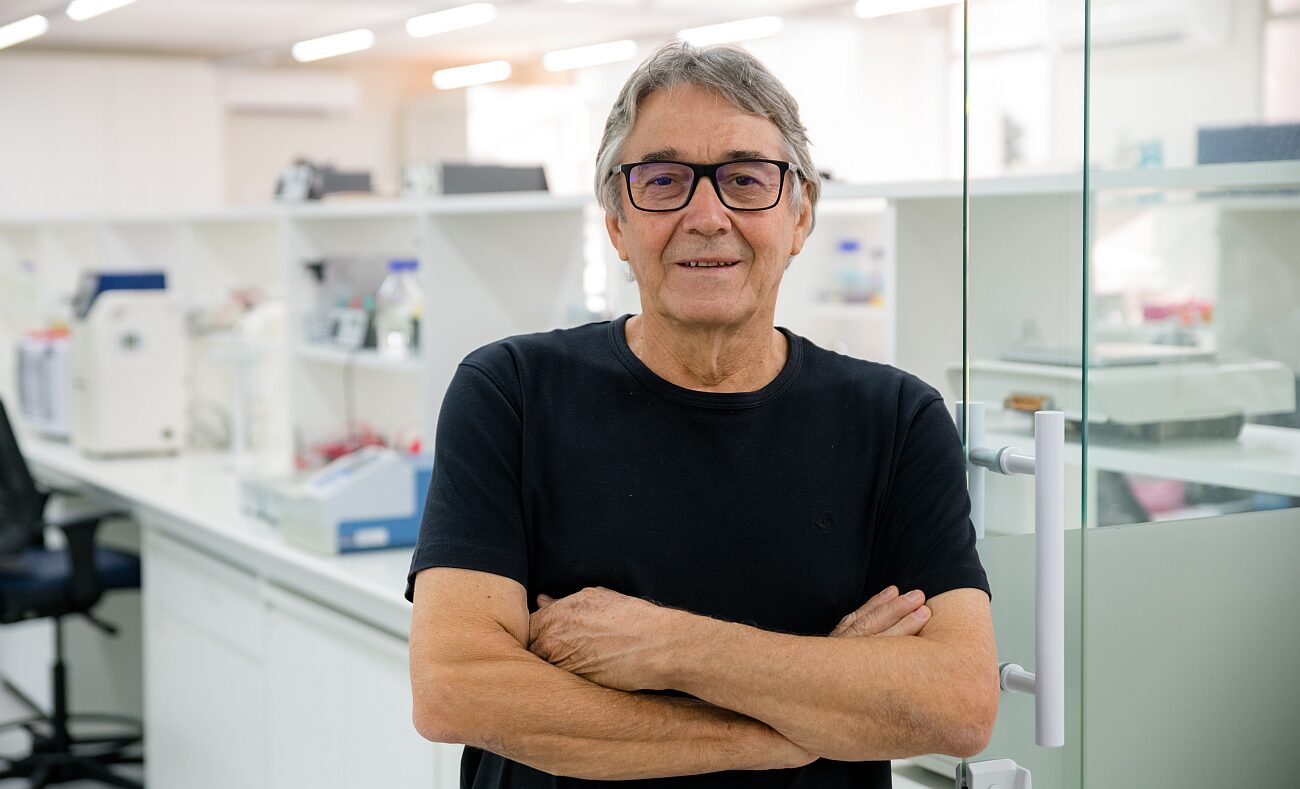AgFunderNews interviews our founder and CEO, Prof. Paulo Arruda, about the future of gene editing and how it can boost crop resilience to drought and pests.
Originally published on AgFunderNews. Excerpt.
August 4, 2025 | Elaine Watson
CRISPR-Cas9 gene editing technology—sometimes billed as “programmable DNA scissors”—is still relatively new in the world of plant breeding. But with its speed, precision, and regulatory advantages in some markets at least (enabling more rapid commercialization vs crops classed as GMOs), it is gaining traction.
AgFunderNews caught up with Dr. Paulo Arruda, professor of genetics at the State University of Campinas in São Paulo, and founder and CEO of startup InEdita Bio, to explore how gene editing can boost crop resilience to drought and pests.
AFN: Tell us about why you started InEdita Bio.
PA: The way we produce food nowadays is not sustainable. More than 80% of the energy the human population gets comes from a handful of crops. And 20% of the grains that are produced are lost to diseases, mostly fungi and pests, although hundreds of millions of tons of pesticides are sprayed to control the problem. We cannot keep doing things the same way.
AFN: What’s the attraction of CRISPR?
PA: CRISPR allows us to use an enzyme, a nuclease that is guided by guide RNAs to a specific point in the genome of any organism and make small changes so that we can change a plant from a susceptibility state to a resistance state.
During the breeding process over the years, we’ve lost the genetic variability that confers resistance to pests and disease because breeding has been focused on [increasing] yield. But now we need technology to help plants grow in more challenging environments.
AFN: Are single genes typically involved in conferring these desired traits or do they involve multiple genes?
PA: Most of the characteristics involved in yield are what we call polygenic where several genes are involved. Each gene adds a small piece, a small percentage of the yield. But when we talk about disease resistance, a single gene can confer resistance to fungi, bacteria and viruses, but the resistance alleles of those genes have been lost in the breeding programs.
Let’s take corn as an example. Here in Brazil there are over 200 commercial hybrids with different genetic backgrounds that are grown from the south to the north of the country. So when you talk about drought resistance, for example, you need to take into account those different areas and regions and different germplasm, there is a complex genetic and environmental combination.
The beauty of gene editing is that we can play with a single gene but we can play also with multiple genes using multiplex genome editing [using multiple guide RNAs to target multiple genomic sites simultaneously] which can include multiple different genes or multiple sites within the same gene or multiple alleles of a gene].
We can also use this technology to add specific modifications on commercial germplasm, varieties and hybrids that are grown in a particular region.
AFN: I understand that InEdita Bio is looking closely at the microbial populations that live with plants?
PA: We use gene editing for developing relevant traits in plants, but plants are also associated with thousands of microorganisms that help them with nutrient uptake and resistance to drought, stress, and diseases.
For example, in Central Brazil, you have areas where you can go six months without any rain, but there’s huge biodiversity. So, the question is how? The answer is that the plants have developed mechanisms to survive, but also, they are associated with microorganisms that live in this area that help them to survive in poor environments in terms of nutrients and water availability.
So, we need to put together plant genetics with microbial genetics. This is the future of biotechnology.
And this is some of what we are doing at InEdita, genome editing to improve the association of the microorganism with the plant. So, you can do genome editing in the microorganism and you can do genome editing in plants and in the future, we’re going to see this merging of plant genetics with microbial genetics. Exploring this idea, I think, will help increase the sustainability of food production.
For example, we’re working on developing plants that better associate with nitrogen-fixing microbes. Soybeans for example can associate with nitrogen-fixing bacteria that produce nodules in the roots, and supply all the nitrogen through biological nitrogen fixation (BNF). In Brazil, the largest producer of soybeans in the world, we don’t need to supply the crop with nitrogen fertilizers because the nitrogen comes from BNF. [Brazil is known for very efficient biological nitrogen fixation in soybeans, thanks to widespread inoculation with effective strains of Bradyrhizobium and the selection of soybean varieties well adapted to symbiosis].
So, can we make other crops [which do not naturally form root nodules or enter into a symbiotic relationship with nitrogen-fixing bacteria] that can attract bacteria in the same way?
AFN: How can you make plants that attract these kinds of beneficial bacteria?
PA: You can make plants that produce signaling compounds that attract the beneficial microorganisms and help them to grow and colonize and help plants to fix nitrogen. This is the future.



